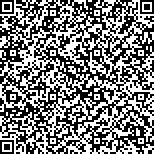| 引用本文: | 侍昊,李旭文,牛志春,李继影,李杨,李宁.基于随机森林模型的太湖水生植被遥感信息提取.湖泊科学,2016,28(3):635-644. DOI:10.18307/2016.0320 |
| SHI Hao,LI Xuwen,NIU Zhichun,LI Jiying,LI Yang,LI Ning.Remote sensing information extraction of aquatic vegetation in Lake Taihu based on Random Forest Model. J. Lake Sci.2016,28(3):635-644. DOI:10.18307/2016.0320 |
|
| |
|
|
| 本文已被:浏览 10554次 下载 5456次 |

码上扫一扫! |
|
|
| 基于随机森林模型的太湖水生植被遥感信息提取 |
|
侍昊1, 李旭文1, 牛志春1, 李继影2, 李杨3, 李宁4
|
|
1.江苏省环境监测中心, 南京 210036;2.苏州市环境监测中心站, 苏州 215004;3.南京师范大学虚拟地理环境教育部重点实验室, 南京 210023;4.南京大学生命科学学院, 南京 210046
|
|
| 摘要: |
| 水生植被作为太湖湿地的重要组分,其数量和范围变化影响着湖泊生态系统的平衡,故利用遥感技术对水生植被的空间分布开展研究有助于太湖湿地生态系统的保护.以Landsat 8多光谱遥感影像为主要数据源,利用光谱指数和图像变换方法构建多个特征变量,结合随机森林(RF)模型,提取太湖水生植被的空间分布.结果表明:(1)通过对比分析训练样本特征值的平均值、标准差和变异系数,NDVI、NDWIF、SR等指数更易于区分开敞水域和沉水植被、浮叶植被和挺水植被;(2)当设置1000棵分类树和4个分割节点的随机变量时,RF分类模型的袋外误分率小于6%,误分主要受SR、MNDWI和NDVI等特征变量影响;(3)通过验证分析,基于RF模型获得的2014年7月太湖水生植被覆盖面积约为306.0 km2,分类精度为88.56%(Kappa系数为0.88),主要分布在湖体的东部和南部,以沉水和浮叶植被为主,两者占水生植被覆盖总面积的84.9%. |
| 关键词: 水生植被 随机森林模型 特征变量 Landsat 8 太湖 |
| DOI:10.18307/2016.0320 |
| 分类号: |
| 基金项目:高分辨率对地观测系统重大专项(05-Y30B02-9001-13/15-WX2)、国家水体污染控制与治理科技重大专项(2012ZX07506003)、江苏省环境监测科研基金项目(1315、1416)、环保公益性行业科研专项(201309008)和江苏省普通高校研究生科研创新计划资助项目(KYLX15_0745)联合资助. |
|
| Remote sensing information extraction of aquatic vegetation in Lake Taihu based on Random Forest Model |
|
SHI Hao1, LI Xuwen1, NIU Zhichun1, LI Jiying2, LI Yang3, LI Ning4
|
|
1.Jiangsu Environmental Monitoring Center, Nanjing 210036, P. R. China;2.Suzhou Environmental Monitoring Center, Suzhou 215004, P. R. China;3.Key Laboratory of VGE, Ministry of Education, Nanjing Normal University, Nanjing 210023, P. R. China;4.School of Life Science, Nanjing University, Nanjing 210046, P. R. China
|
| Abstract: |
| Aquatic vegetation is a vital component of the ecosystem of Lake Taihu. Assessment of its distribution and abundance by using remote sensing techniques is important for the protection of Lake Taihu as the information serves as an excellent indicator of aquatic environmental quality. In this research, to extract spatial distribution of the different aquatic vegetation types in Lake Taihu, we took Landsat 8 multi-spectral images as the main data source and applied them with Random Forest Model on the basis of multiple characteristic variables, which were constructed by the method of spectral index and image transformation. The results show:(a) By analyzing and comparing statistics mean, standard deviation and variable coefficient obtained from different training samples, we found NDVI, NDWIF and SR were better characteristic variables for distinguishing open water and floating-leaf vegetation, submerged vegetation and emergent vegetation than others.(b) Under the condition of 1000 classification trees with 4 random variables in split node, the out-of-bag error of Random Forest Model was below 6%. The error of model was mainly affected by SR, MNDVI and NDVI.(c) According to validation analysis, the overall accuracy classification of image based on Random Forest Model was about 88.56% with a high Kappa index of 0.88. The total area of aquatic vegetation was about 306.0 km2 in July of 2014, in which floating-leaf vegetation and emergent vegetation accounted for 84.9% and were mainly distributed in the eastern and southern parts of Lake Taihu. |
| Key words: Aquatic vegetation Random Forest Model characteristic variables Landsat 8 Lake Taihu |
|
|
附件
|
|